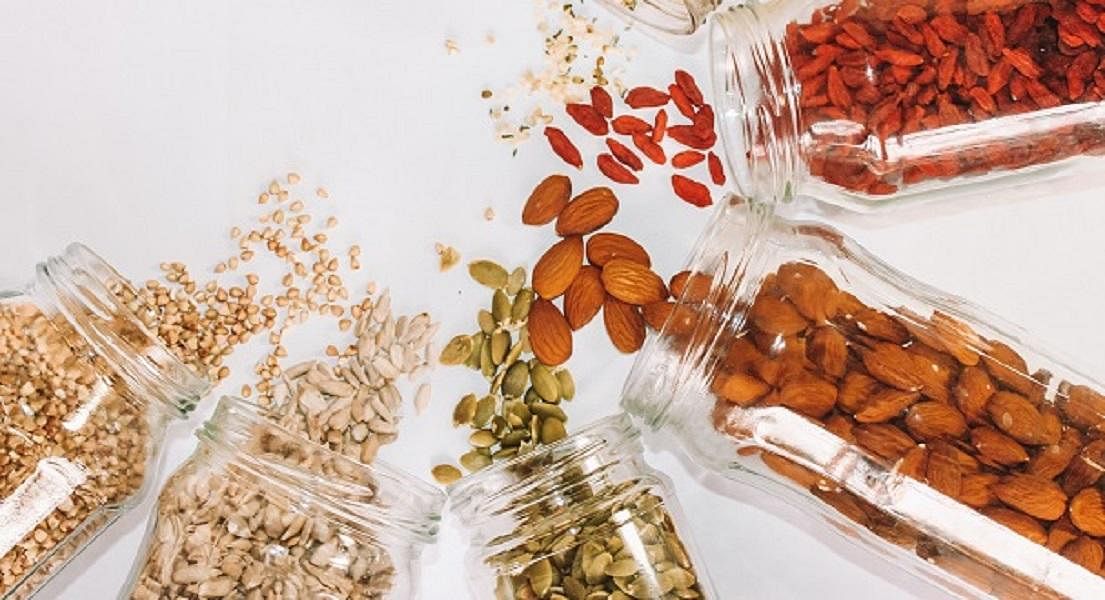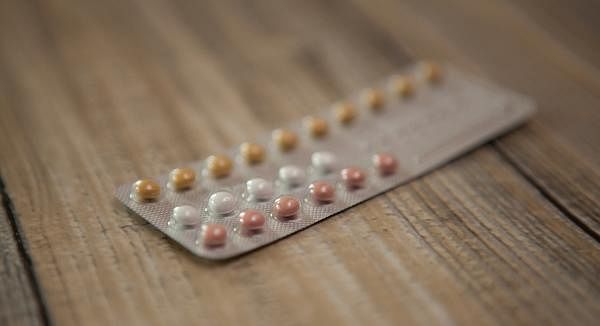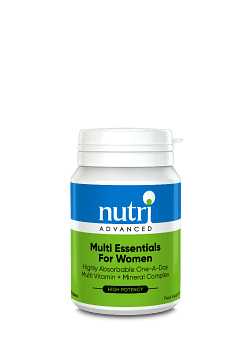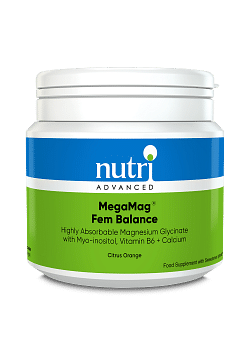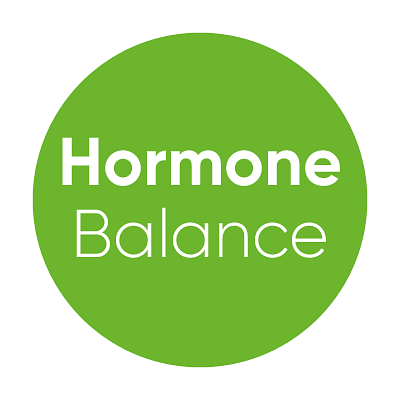Seed Cycling For Female Hormone Balance
Why you can trust Nutri Advanced Every article on our site is researched thoroughly by our team of highly qualified nutritionists. Find out more about our editorial process.
Seed cycling is a simple method of eating different types of seeds during the first and second phases of the female menstrual cycle. It has long been used as a natural, easy-to-implement way of supporting hormone balance.
How does it work?
The main aim of seed cycling is to regulate oestrogen in the first half of the cycle, and progesterone in the second half. During the first half of the menstrual cycle it is recommended that you consume 1 tablespoon each of ground flaxseeds and ground pumpkin seeds daily. Flaxseeds are rich in oestrogen-balancing phytoestrogens and inflammation-regulating omega 3s. Pumpkin seeds are a great source of zinc which supports progesterone release and omega 3s to regulate inflammation.
During the second half of the cycle change to 1 tablespoon each of sesame seeds and sunflower seeds. Sesame seeds contain oestrogen-balancing phytoestrogens, zinc and selenium, whilst sunflower seeds are rich in vitamin E to support progesterone levels and selenium to support oestrogen elimination.
Who can benefit?
Seed cycling may be useful for anyone experiencing symptoms associated with female hormone imbalances, and is often recommended for women with PMS, PCOS, infertility, endometriosis and even menopausal symptoms. Seed cycling certainly doesn’t offer a ‘quick fix’ to hormone balance, however many women report positive changes after just a few months of following these simple guidelines.
Interested in giving it a go?
Here’s our quick guide to seed cycling and a handy visual guide that you can share with others or pin on the fridge.
Quick guide to seed cycling
Here’s what you need:
Ingredients
✔ Flaxseeds (organic, whole)
✔ Pumpkin seeds (organic, whole)
✔ Sesame seeds (organic, whole)
✔ Sunflower seeds (organic, whole)
Equipment
Coffee grinder / blender / food processor
Method
Weeks 1-2
• Place 7 tbsp of flaxseeds in a coffee grinder or similar, grind to a fine powder.
• Place in an airtight container (recycled glass jam jars work well) and store in the fridge.
• Repeat this process for pumpkin seeds.
• Seed powders are best used as fresh as possible and will keep for 7 days.
• Repeat the same process for week 2.
Weeks 3-4
• Place 7 tbsp of sesame seeds in a coffee grinder or similar, grind to a fine powder.
• Place in an airtight container (recycled glass jam jars work well) and store in the fridge.
• Repeat this process for sunflower seeds.
• Seed powders are best used as fresh as possible and will keep for 7 days.
• Repeat the same process for week 4.
Here’s what to do:
Day 1 (first day of menstrual cycle) – Day 14
Consume 1 x tablespoon ground flaxseeds & 1 x tablespoon ground pumpkin seeds daily
Top tip: Ground seeds can be added to smoothies, yoghurt, granola, salads and even sprinkled on top of steamed vegetables to add a bit of crunch just before you serve them
Day 14 – Day 28
Consume 1 x tablespoon ground sesame seeds & 1 x tablespoon ground sunflower seeds daily
Day 1
Start the process again and enjoy the hormone-balancing benefits…..
This website and its content is copyright of Nutri Advanced ©. All rights reserved. See our terms & conditions for more detail.
Nutri Advanced has a thorough research process and for any references included, each source is scrutinised beforehand. We aim to use the highest value source where possible, referencing peer-reviewed journals and official guidelines in the first instance before alternatives. You can learn more about how we ensure our content is accurate at time of publication on our editorial policy.
Most Popular Articles
-
7 Surprising Ways To Support Your Magnesium
If you are displaying signs of a magnesium deficiency, here are 7 ways to boost your magnesium levels that are easy to incorporate into your daily life. -
5 Best Vitamin C Supplements Picked By Our Experts
Learn more about the different types of vitamin C, the different benefits you get from different types, and what you get for spending more on a good supplement. -
Top 5 Vitamins For Energy And Tiredness Picked By Our Experts
The 5 best and most important vitamins for energy & tiredness including B vitamin food sources & best supplement forms for energy. -
Benefits of Myo-Inositol for Polycystic Ovary Syndrome (PCOS)
In this research review article, we take a closer look at a lesser-known natural compound called myo-inositol that has been found to have significant potential to improve many of the prevalent features of PCOS. -
Top 10 Reasons to Give Your Kids Omega-3
Read the top 10 reasons that kids should have plenty of Omega-3- an essential fatty acid- including for depression, brain function, sleep & reading/maths skills.

